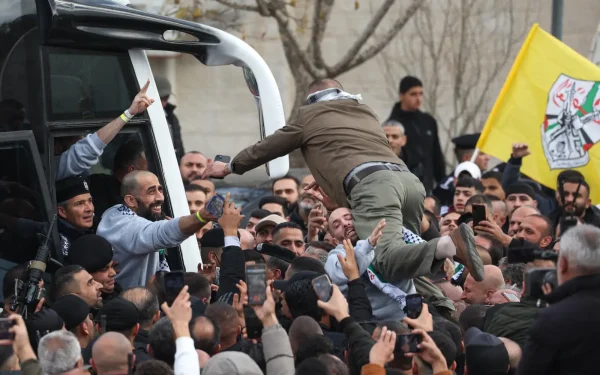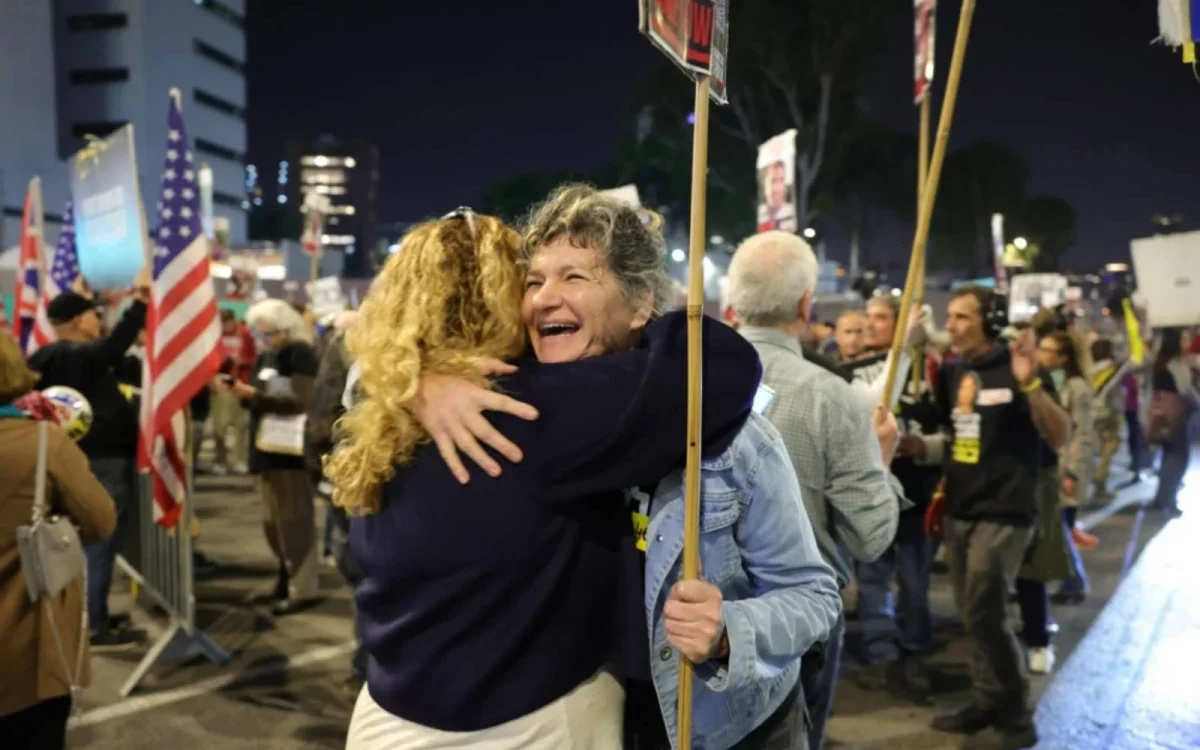On January 19th 2025, scenes of celebration were seen across Israel as three female hostages – Emily Damari, Romi Gonen, and Doron Steinbrecher – crossed into Israeli territory and reunited with their families for the first time since the war began more than a year ago. Hours later, 90 Palestinian prisoners, many of whom Israel sentenced for life for committing acts of terrorism, went free in exchange for the hostages. The US, Qatar, and Egypt, who have acted as the intermediaries between Israel and Hamas throughout the conflict, brokered the latest deal.

Milken students and teachers expressed their emotions about the release of these hostages that were taken along with over 250 others on October 7th 2023.
“I am very, very, very happy to see all these hostages who have not seen sunlight for over a year.” shared Noa F (‘25). “Just seeing them reunite with their families and loved ones – it’s been really nice.”
The initial hostage-prisoner exchange represents the beginning of the first phase of the latest cease-fire deal between Israel and Hamas. It aims to end 15 months of fighting and bring back all Israeli hostages who are still alive and in captivity.
“It was really exciting, and it didn’t feel real,” Rona L, (‘25) said, upon hearing the news of the deal. At the same time, “it was kind of scary because it’s stressful for all these families. They don’t know if their kids are dead or alive, and who’s coming back. But it was really emotional.”
The war began on October 7th 2023 when Hamas terrorists broke through the Gaza-Israel border and massacred more than 1,200 people, most of them civilians, and took back 251 hostages. Last November, a weeklong truce between Israel and Hamas led to the freeing of 105 hostages. Since then, Israel has liberated seven hostages through their military operations, and, as of February 1st, 18 hostages have been released as part of the ceasefire deal. Seventy-six hostages remain in Gaza, of which only 45 are thought to be still alive. In the first phase of this new deal, Hamas must release 33 hostages in exchange for over 1,500 Palestinian prisoners.

Many people have raised concerns about the high price of each hostage that has been released. “Past hostage deals are usually much more equal than the hostage deal in this situation,” Dr. Mike Hyatt, an American Government teacher at Milken said. “What I mean by that is it’s usually a one-for-one, or a two-for-two swap. It’s very unusual, from what I know of hostage deals, to have three people exchanged for 20, which sort of gives me pause as to why that is.”
While the terms of the deal remain controversial for this reason as well as the fear that convicted terrorists will plan further attacks, the global Jewish community has largely welcomed the relative safe return of hostages.
“The deal is very controversial,” said Rona, “because people are [thinking,] why give them back prisoners if one of the prisoners we gave back 10 years ago created October 7th? But I think we need to get all our people back, and then we can actually eliminate [Hamas] again.”
Noa sees the hostage deal as a “sign of Jewish unity.” She added, “The one [hostage Agam Berger] freed just yesterday – she was the one braiding the other hostages’ hair before they were being released. Now, all over the world, girls have been braiding their hair and putting yellow ribbons to symbolize the hostages [and their solidarity with them].”
The Milken Community has expressed that solidarity.
“Post October 7th, the idea of peoplehood has been front and center,” shared Dr. Sarah Shulkind, Milken’s Head of School. “The hostages are our brothers and sisters, sons and daughters, mothers and fathers,” she said.
“We feel inextricably connected to them and with every one that returns safely it feels [like] a small piece of our broken world has been restored.”




